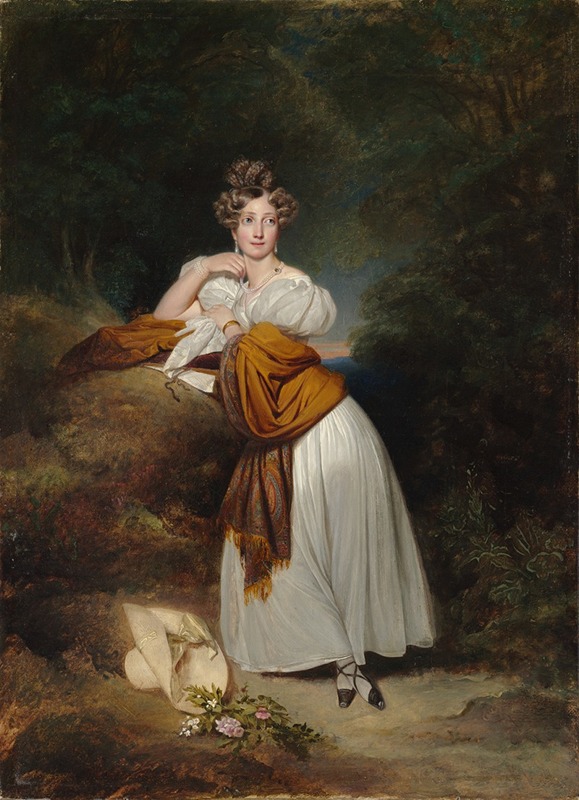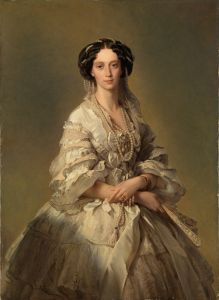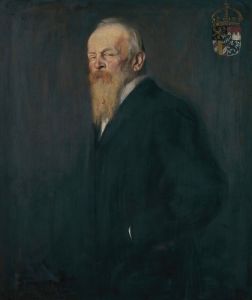
Sophie Guillemette, Grand Duchess of Baden
A hand-painted replica of Franz Xaver Winterhalter’s masterpiece Sophie Guillemette, Grand Duchess of Baden, meticulously crafted by professional artists to capture the true essence of the original. Each piece is created with museum-quality canvas and rare mineral pigments, carefully painted by experienced artists with delicate brushstrokes and rich, layered colors to perfectly recreate the texture of the original artwork. Unlike machine-printed reproductions, this hand-painted version brings the painting to life, infused with the artist’s emotions and skill in every stroke. Whether for personal collection or home decoration, it instantly elevates the artistic atmosphere of any space.
Franz Xaver Winterhalter, a renowned 19th-century German painter, created the portrait titled Sophie Guillemette, Grand Duchess of Baden. This artwork depicts Sophie Guillemette of Sweden, who was born on May 21, 1801, as Princess Sophie of Sweden, the daughter of King Gustav IV Adolf of Sweden and Queen Frederica of Baden. She later became the Grand Duchess of Baden through her marriage to Leopold, Grand Duke of Baden, in 1819.
Winterhalter, celebrated for his skill in portraiture, particularly of European royalty and aristocracy, painted this work during his career as a court painter. Known for his ability to capture elegance and refinement, Winterhalter's style often emphasized the grace and dignity of his sitters, which is evident in this portrait of Sophie Guillemette. The painting showcases the Grand Duchess in formal attire, reflecting her status and the fashion of the time. Winterhalter's use of soft brushwork and attention to detail highlights the luxurious fabrics and intricate jewelry, underscoring the wealth and prominence of his subject.
Sophie Guillemette played a significant role in the Baden court and was known for her charitable activities and dedication to her family. She and Leopold had several children, many of whom formed alliances with other European royal families, further solidifying the influence of the House of Baden. Sophie lived through a period of significant political and social change in Europe, witnessing the decline of Napoleonic influence and the rise of new political movements.
The exact date of the painting is not definitively recorded, but it is consistent with Winterhalter's active period as a portraitist for European nobility, particularly during the mid-19th century. The portrait is an example of Winterhalter's ability to combine realism with idealization, creating an image that is both a likeness of the sitter and a representation of her social and cultural standing.
As of now, the painting is part of a collection, though its specific location or ownership may vary depending on exhibitions or private holdings. Winterhalter's works, including this portrait, continue to be celebrated for their artistic merit and historical significance, offering insight into the lives and appearances of 19th-century European elites.

















